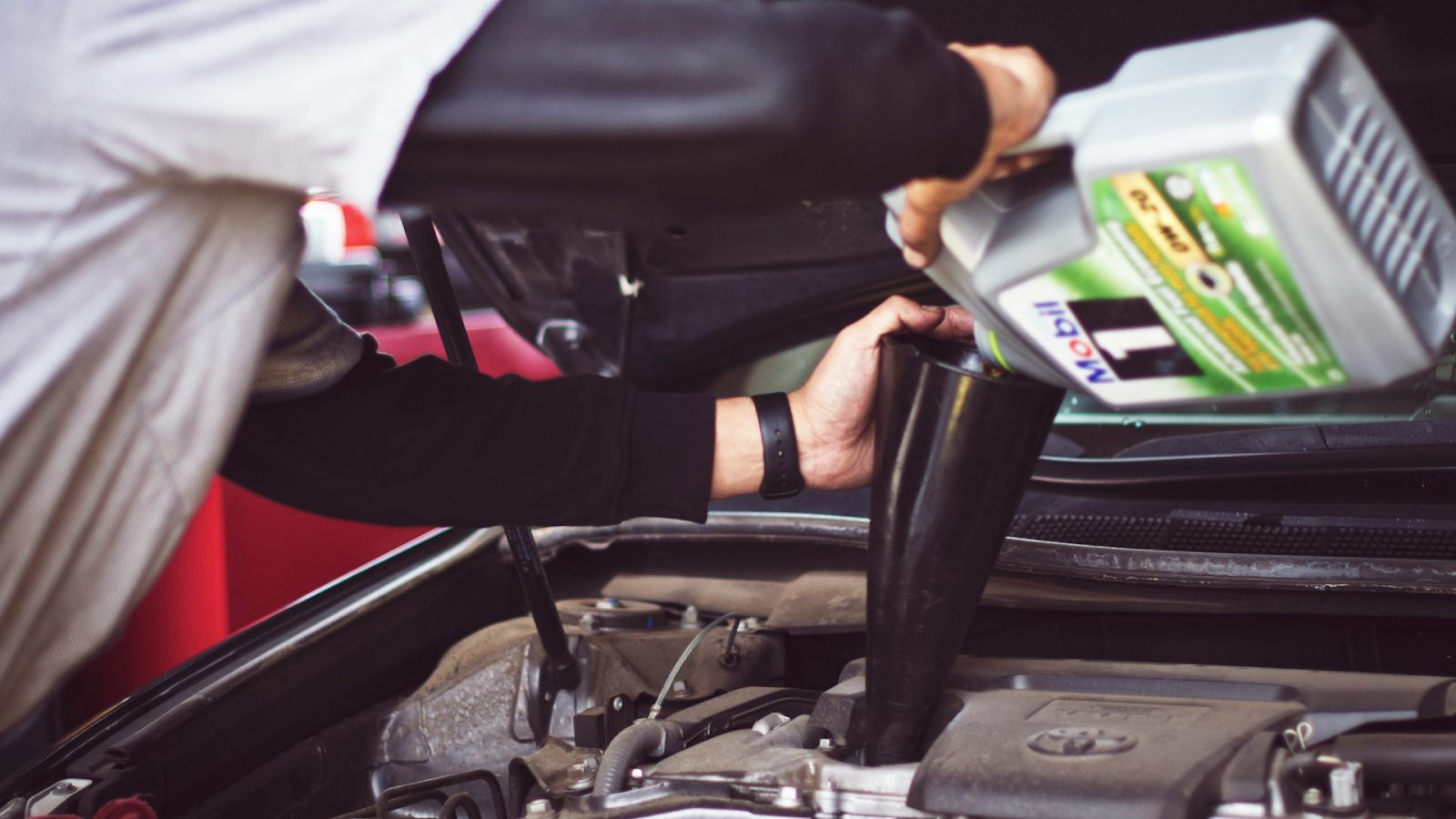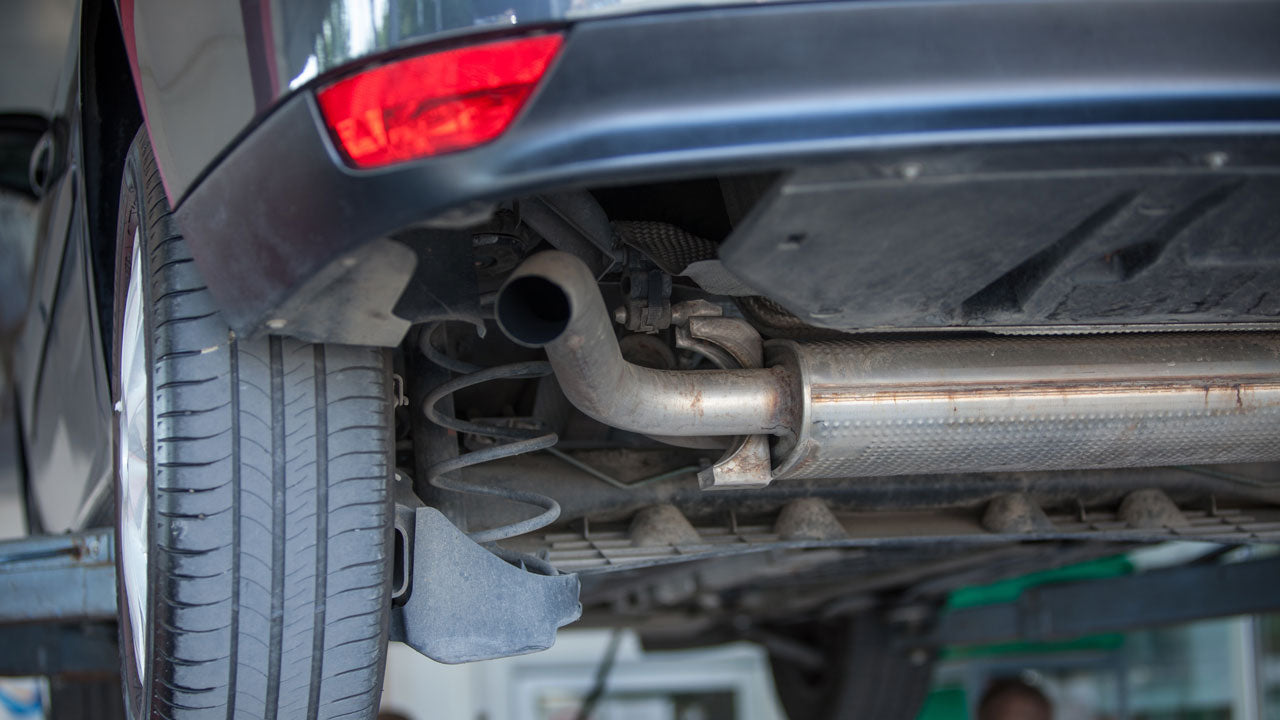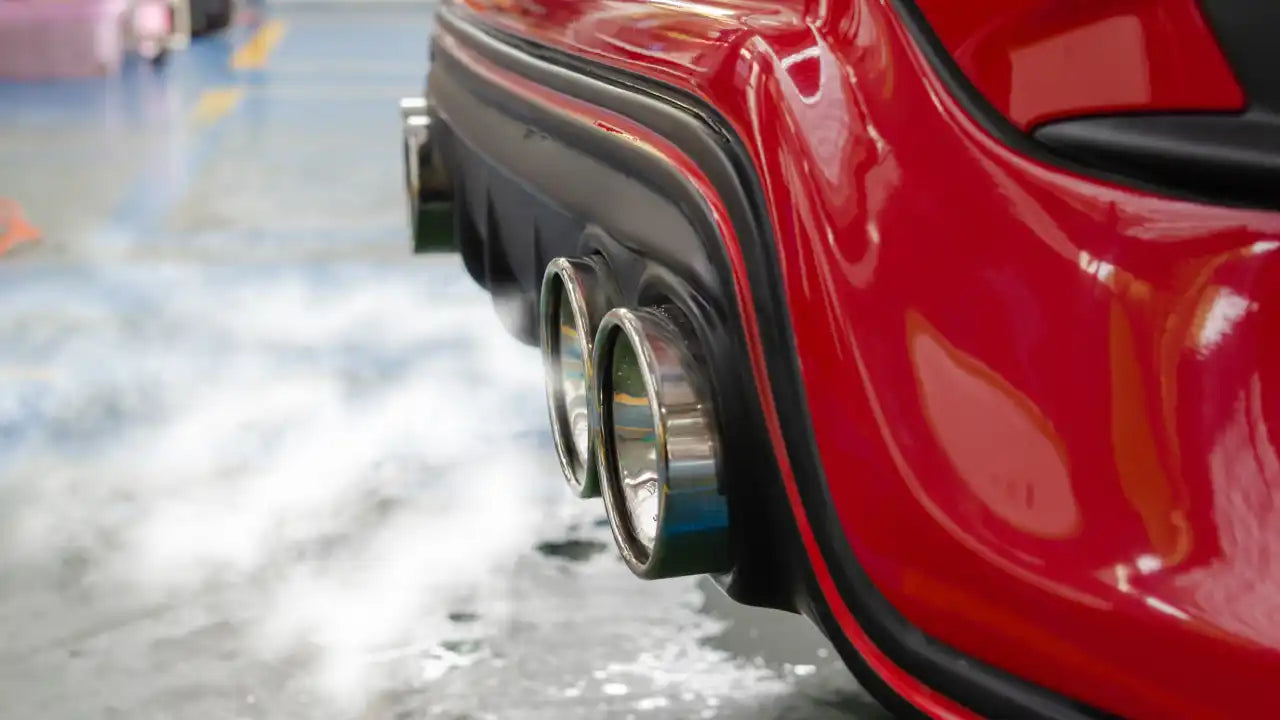Tires 101: A Comprehensive Guide
Share
The palm of your hand. It is just that; car tires work their magic in a contact patch roughly the size of your palm. When driving, each of your tires is connected to the road by just that much space. You and your family’s or loved ones’ lives are all riding on that small contact patch, no matter how big and heavy your vehicle is. This fact alone proves the importance of car tires and how much attention you have to pay them.
Tires are incredible pieces of technology that develop continuously to do four things: support your vehicle’s weight, transmit acceleration and braking forces to the ground, change and maintain your vehicle’s direction, and absorb shocks from the road. They are consumable parts that have to be maintained and changed regularly, and when it comes to replacing them, there are some things you have to know.
The world of car tires may seem slightly complicated to the uninitiated, but it is really not if you know some key points. Read on as we will educate you on every single detail about car tires and guide you to hit the bull’s eye when it’s time to change yours.
TIRES, SAFETY, AND PERFORMANCE
Tires play a significant and crucial role in a vehicle’s driving dynamics, handling, traction, safety, and general performance. High-quality and properly specced tires provide the best control and stability, reduce hydroplaning risk in wet conditions, and enhance braking and fuel efficiency. Regularly inspected and well-maintained tires ensure your vehicle performs at its best and provides maximum safety in any condition.

BASIC TIRE MAINTENANCE
Now that you know how vital your vehicle’s tires are, let’s look at maintaining them and keeping their performance in tip-top shape at all times.
Proper tire pressure is the first and most important maintenance you can do on your tires. Incorrect tire pressure can lead to poor handling, increased braking distance, and worse fuel economy. The correct tire pressures for your vehicle are stated in the owner’s book, on a sticker inside the fuel cap, or inside the door sills.
Keep in mind that the pressures stated on the owner's book or on the car are for cold tires. If you've driven a considerable amount of time, let the car sit for a while and let the tis coold own before checking and correcting pressures. Stick to the correct pressure, and you will get the most out of your tires while ensuring optimum performance and safety.
Regular Tire Inspection
Keeping an eye on your tires ensures safety and timely interference if anything goes wrong. Regularly check your vehicle’s tires so that you can identify minor cuts, low tire pressure, cracks, or out-of-ordinary wear patterns.
Rotating Tires
Tire rotation means periodically changing your tires’ position. You can rotate them every 5,000 miles or as recommended by your vehicle’s or tires’ manufacturer. Regularly rotating tires will ensure you get the most extended and safest life available from your tires. It is also a great opportunity to visually inspect the tires for damage, wear, and air pressure.
You can contact a tire specialist for the best rotating pattern to go for, as rotating depends on your tire type, whether the vehicle is rear-, front-, or all-wheel drive, whether your tires are directional or not, and whether or not the tires are the same size on the front and back.
Correct Wheel Alignment and Tire Balancing
Correctly balanced tires and proper wheel alignment prevent uneven tire wear and vibration. This enhances ride comfort and tire longevity, provides correct handling characteristics for your vehicle, and prevents your car from pulling to one side.
Correct Pressure and Monitoring It
Almost all modern vehicles have built-in tire pressure monitoring systems that warn you if one or more tires lose a critical amount of pressure. You can also use a tire pressure gauge if your vehicle does not have a TPS system.
Check tire pressures roughly every two weeks and make corrections to ensure your tires are inflated to the vehicle manufacturer’s specifications for the best fuel efficiency, ride comfort, and safety. Correct tire pressure is also crucial for the longevity of your tires.

Correct tire pressures can be found inside the fuel cap, door pillars, or in the owner's manual.
Basic Tire Repairs
Small damages to tires can be repaired, saving you quite a bit of cash compared to replacing them. First of all, do not try to save a tire that is damaged from its sidewall. It simply will not work, and you will take the risk of having much bigger hazards and damages. Sidewall damage ruins a tire immediately. If the puncture is not too substantial, as it is smaller than a quarter of an inch, and it is on the tire tread, there are two ways to get it repaired.
One way is to use plugs, which we do not recommend, as they are simply inserted in the punctured area and are not reliable. For the best result, get a full inspection of the damage and get it repaired with a patch from inside the tire. There are DIY puncture repair kits but we recommend getting a repair at a professional tire store.
WHEN TO REPLACE TIRES
Tires are consumables; it is important not to insist on using them if they lose their roadworthiness. It is better to get them inspected by a professional, but there are some easy steps you can take, too.
You can do some basic visual inspections. Check for uneven wear patterns, severe cracks, bulges, and vibrations while driving. Uneven wear may be caused by wrong or improper inflation or misalignment, which reduces the life of your tires. If one or more of your tires have visible cracks or bulges on the sidewall, you must replace them as soon as possible.
Other than the wear and tear, tires have a time limit to keep driving on them. Just because you’re driving very few miles per year and your tires look new doesn’t mean that your tires don’t need to be replaced. Tires are made of rubber, and they start deteriorating the day they leave the factory. The deterioration gets even faster when mounted on a car, and exposure to UV light and many external factors causes the rubber to start to lose its function.
A tire loses its function entirely around five years after being mounted on a vehicle, independent of the miles it’s been driven. If a tire is not mounted on, the maximum it would last is around ten years after the date of manufacture.
Tread Depth: The Penny Test
Your tires may look good visually, but if the tread depth is below the legal limit, you must replace them. The legal limit in the U.S. for tire tread depth is 2/32 inches. One of the easiest and best ways to decide if the tread depth is still roadworthy is “The Penny Test.” You can easily measure your tires with a penny.
Place the penny upside down on your tires inside a tread groove (Lincoln’s head should point down). If the top of Lincoln’s head disappears, you’re still away from the 2/32” threshold, so you’re basically good to go. If the top of the head is visible, it is time to get new tires.
TYPES OF TIRES
Now you know how vital tires can be, how to inspect them on your vehicle, and whether it’s time to replace them. You may be thinking, “OK, so far, so good, but this is where things get really complicated.” Fear not. Keep on reading, as we will be covering different tire types for passenger vehicles and all about those numbers and codes that matter when picking new tires for your car.
Summer Tires
These are optimized for warmer weather. They offer superior grip and handling on dry and wet surfaces in warmer seasons, but they are not suitable for cold and snowy weather and are not ideal for year-round driving. For the coldest times of the year, these tires will underperform compared to their abilities on summer days.
Winter Tires
These are not to be mistaken for snow tires. Winter tires have a special compound that activates below a certain degree (40F, usually). When temperatures drop to 40 and below, the special compound makes the tire grip, handle, and brake outstandingly on snow, ice, and in wet conditions with cold weather. It is also NOT OK to use winter tires year-round. You should get a dedicated winter tire for the coldest times.

All-Season Tires
If you’re looking for a tire you can drive year-round, this is the one. All-season tires offer acceptable grip and a good balance on dry, wet, and snow-covered surfaces. As a jack of all trades, all-season tires do not provide the best performance in all conditions, but they offer a reasonable sacrifice for your daily needs.
All-Weather Tires
All-weather tires are more like a sub-segment of all-season tires. They are suitable for all-year-long driving and designed to “do it all.” They are designated by a snowflake on a mountain symbol. They offer winter tire-like performance on snow and similar performance in other areas like conventional all-season tires. They are still no substitute for dedicated summer or winter tires if you want the best performance every season.
Performance and High-Performance Tires
All the tire types we mentioned above have touring and high-performance variants. While touring versions focus on comfort and longevity with reasonable grip levels, high-performance variants provide exceptional grip and handling at higher speeds and during aggressive driving. Performance tires usually offer these at the expense of longevity, as more grip requires a softer compound.

All-Terrain/4x4 Tires
All-Terrain tires have widely spaced tread patterns, helping them get a better grip on muddy surfaces and surfaces that can crumble into pieces as you drive on. Mud and debris fill up standard tire grooves very quickly, causing wheel spin and burying the tire into the ground easily. All-terrain or 4x4 tires excel on challenging terrain such as mud, grass, and snow, maintaining superior traction without getting clogged.
Tire Storage
You went the winter tire/summer tire path, or maybe you have 4x4 tires for adventurous drives and road tires for daily driving for your off-roader. If you have multiple sets of tires, you need to store the ones that are not currently mounted on the vehicle.
You can use tire storage facilities or, if you have available garage space, store them yourself. Make sure your tires are stored in a clean, moist-free, cool, and dark location on a clean, grease-free surface. Place the tires stacked sidewall to sidewall. If you’re storing them outdoors, get water-proof covers for them and raise them off the ground.
NUMBERS, RATINGS AND CODES ON TIRES
You checked your tires and decided that it’s time to replace them. You checked your owner’s book or the tires mounted on the car. It says “225/45R17 91V,” and you went online to get a new set. But there are many options with similar numbers. What do all these numbers mean? How do you read tire size meaning?
All those numbers and codes on the sidewall that matter the most, the complicated part: Explained, clarified, made easy!

Why is Understanding Tire Size Meaning Important?
Knowing what those tire size numbers mean empowers you to make informed decisions that benefit both your driving experience and overall vehicle health. Before decoding tire sizing, let’s look at the reasons why understanding tire size meaning is important:
- Proper Fitment: Tire size ensures a proper fit for your vehicle, preventing issues like poor handling and potential vehicle damage.
- Handling: Larger tires provide better traction and stability, while smaller tires improve maneuverability, particularly in performance vehicles.
- Fuel Efficiency: Wider tires create more rolling resistance, reducing fuel economy, while narrower tires tend to improve it
- Safety: Correct tire size ensures optimal braking performance, better grip in different conditions, and prevents uneven wear that could impact your vehicle’s response to braking.
- Ride Comfort: Higher sidewall tires, that is, tires with a larger aspect ratio, offer a smoother ride, while lower-profile tires provide a sportier feel with less cushioning.
- Accurate Speedometer Readings: Correct tire size ensures accurate speedometer readings, preventing errors caused by incorrect tire fitment that could affect speed and safety.
Decoding Tire Size Meaning
Let’s keep on with our example above; “225/45 R17 91V.” Each part of these tire numbers and letters tells you something important about the tire size.
- The First Number-Tire Width (225): The first number in the sequence is the tire’s width in millimeters. In this case, 225 is the width from one sidewall to the other.
- The Second Number-Aspect Ratio (45): This number represents the height of the tire’s sidewall as a percentage of the width. A 45 means the sidewall height is 45% of the tire’s width.
- The Letter-Tire Construction (R): The letter in the middle is usually an R, which stands for “Radial” construction, meaning that the internal layers of the tire are arranged in a radial pattern for durability and better road contact. Almost all modern tires are radial, so you won’t see many other letters here.
- The Last Middle Number-Wheel Diameter (17): This tells you what size wheel (rim) the tire fits. 17 means the tire is designed for a 17-inch wheel.
Keep reading to learn the meaning of the last number and letter “91V”!
Load Index: How Much Weight Can Your Tires Handle?
The load index tells you the maximum weight a single tire can support when properly inflated. This number typically falls between 70 and 126, where:
- 70 supports up to 739 pounds
- 126 supports up to 3,748 pounds
As this rating applies to each tire separately, your vehicle’s total weight capacity depends on all four tires combined. Choosing the right load index helps prevent overloading, which can affect handling, fuel efficiency, and tire wear.
Speed Rating: How Fast Can Your Tires Go?
The speed rating represents the highest speed a tire can safely sustain over time. It’s marked by a letter next to the load index, except for “Z” rated tires, which are indicated within the tire size notation (e.g., 245/35 ZR19 99Y). Z-rated tires can exceed 149 mph.
Back to our tire size example:
- 91V: This means the tire has a load index of 1,356 pounds and is approved for speeds up to 149 mph.
Here’s a detailed table for speed ratings and load indexes.

Date of Manufacture
Another important detail hidden in the markings on a tire’s sidewall is its date of manufacture. For tires made after 2000, you can find this information on the outer sidewall inside a raised rectangular box. Let’s look for a four-digit code:
- The first two digits represent the week the tire was made.
-
The last two digits indicate the year.
For example, if the code reads “4224,” the tire was manufactured in the 42nd week of 2024.

TIRE TECHNOLOGY
Run-Flat Tires
One of the best and most widely accepted tire technologies is run-flats. These tires allow you to keep driving even after a puncture and safely reach a place to get a repair. First appearing in the 1980s, run-flat technology is so advanced today that many car manufacturers stopped offering spare tires and started fitting their cars with run-flats as standard.
Run-flat tires have reinforced sidewalls that will continue supporting the vehicle even after losing air. You cannot infinitely drive on punctured run-flats, though. The speed and distance limits are specified by the tire manufacturer.
Self-Sealing Tires
Self-sealing tires have a thick polymer liquid permanently installed inside. The liquid allows instant and immediate seal to any puncture up to 5-6 millimeters in diameter. The puncture must be in the center of the tire tread; the liquid cannot seal punctures on the sidewall.
The sealing is not permanent. It only provides trouble-free driving for around 50 miles until you get a proper tire repair.
Smart Tires
As vehicles evolve, tire technology also keeps up with automotive technology. Manufacturers are constantly working to carry tire technology into the future with the help of monitoring systems and early-warning sensors. Currently, tire pressure monitoring systems (TPMS) are the most common technological feature used in tires.
In the not-so-distant future, tire sensors will provide information about tire temperatures, detect abnormal changes in temperature and pressure, and warn drivers before any damage occurs.











